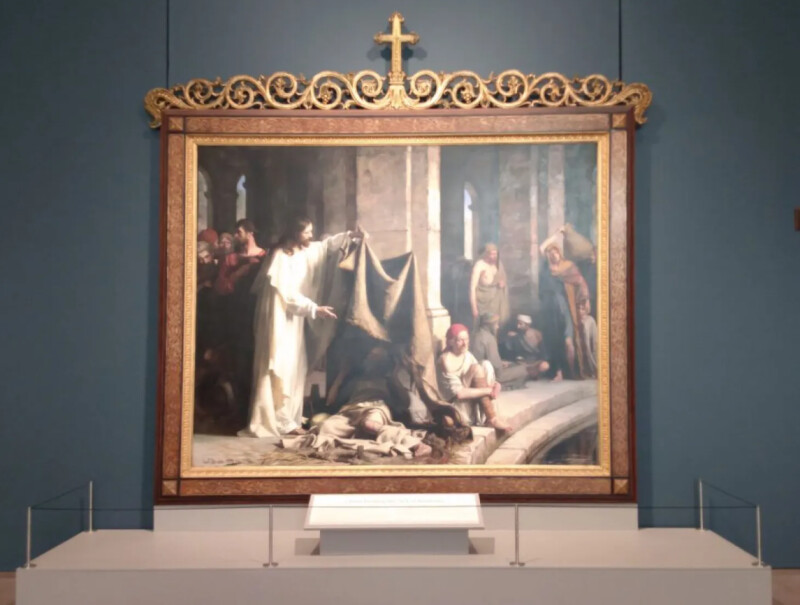Kenneth Hartvigsen, a curator at the Brigham Young University Museum of Art, was recently a guest on the All In podcast, where he invited listeners to slow down and “experience” the frustration, anticipation, and hope of Carl Bloch’s Christ Healing the Sick at Bethesda.
This podcast excerpt has been edited for clarity.
Looking at the painting not long ago, it occurred to me that we’re not looking at Christ healing anybody. We’re actually looking at the moment before somebody is healed. We’re not seeing the man standing up and carrying his bed away. We’re seeing him still lying on this rough bed on the stone next to the pool of Bethesda. We’re seeing a man who, at this moment, still does not believe that healing will ever come. The man doesn’t know who the Savior is and didn’t seek Him out.
What we are witnessing is a moment of anticipation—and probably still a moment of frustration on the part of this man. He’s been lying there for years, for decades—for almost his entire life—hoping that somebody would help him into the water, and nobody has.
I thought about how many times in my life I have felt like a blessing that I thought I should have was never going to come. How many times in my life have I been like this man, lying in spiritual darkness or emotional darkness, and feeling like a blessing is never going to come? Relief is never going to come, because I can’t do X, Y, and Z; I can’t lift myself up and carry myself into the pool, and other people aren’t lifting me up.
I realized how universal this painting is in expressing that moment of frustration, of hope, but also doubt—doubting our own abilities and what part we have to play in reconciling our own shortcomings in this life. But the beauty of it is that the man doesn’t know that the very next words out of the Savior’s mouth will be “Pick up your bed,” and how often we do not realize that the blessing is happening in the very next moment.
That’s just one example of what that painting meant to me recently. But there are so many people in that painting, and you could tell an entire story about each and every character, and we do that sometimes with audiences that come to the museum. We call it “slow looking,” which is what I’ve been describing for you. We’ll bring people in front of the Bethesda, and we’ll just sit there for a few minutes. Then we’ll say, “Tell us what you see. Which characters are you drawn to? How does that make you feel?” And it’s amazing how people will pick out some figure in the background that you’ve never paid attention to, and then they will elucidate for you how that character in the background is the center of the whole painting—and you had no idea.
I think art is about being openhearted. And it’s about spending time and then allowing yourself to openly feel and think whatever it is that this work of art makes you think and feel.
How valuable is that? That pretty much every work of art says to us, “I want you to take a few minutes and think and feel whatever it is that you need to think and feel right now.” Imagine what the world would be like if every single day everyone gave themselves a few minutes to think and feel whatever it is they need to think and feel.
Kenneth Hartvigsen holds a doctorate in art history from Boston University, teaches at BYU, and is an active painter who exhibits work in Provo and Salt Lake City.
Listen to the full episode in the player below.
▶ You may also like: How Walter Rane’s masterpieces have dramatically changed Latter-day Saint art

